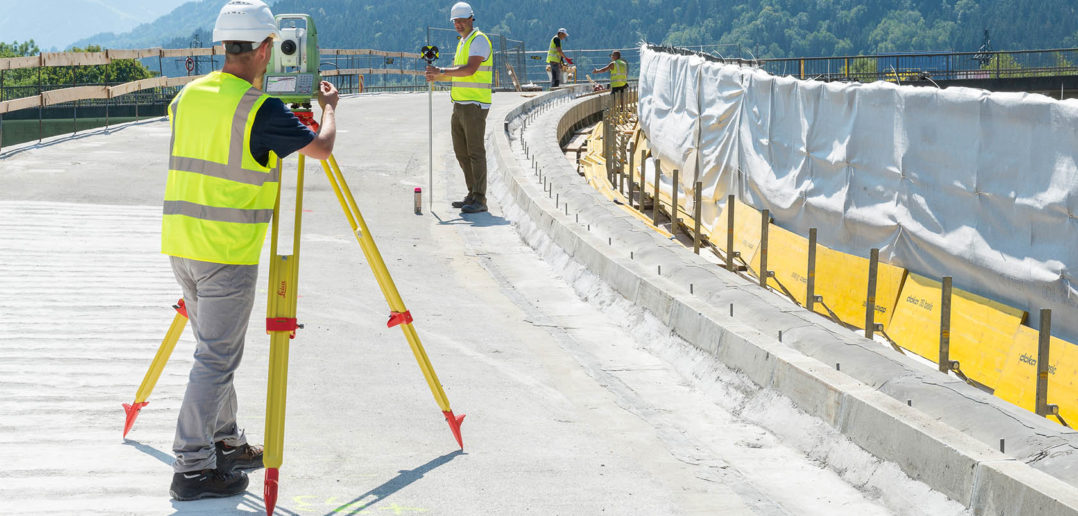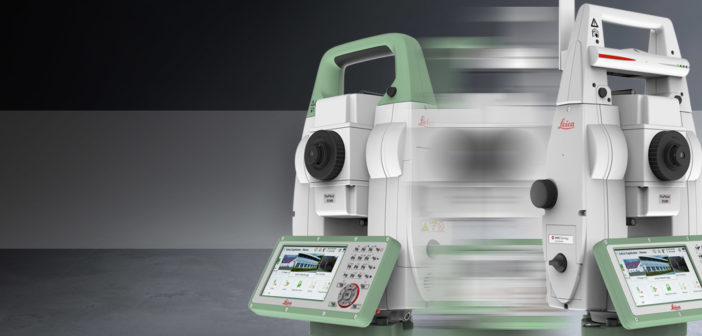A new surveying project is on your horizon. You might be performing a topographic, road, utilities or other survey or stakeout project and, while the variety of tasks you encounter is a definite perk of the job, you must answer a crucial question before you can begin: Which instrument will perform according to your specific project requirements?
Selecting an instrument that will help you work fast enough to finish a project within tight deadlines and that you can depend on in terms of service and support is imperative. This article presents three key considerations to help make that decision.
1. Deciding between manual or automated total station
Manual (often referred to as mechanical) and automated (also known as motorised or robotic) total stations are versatile instruments to measure objects or layout design data. The basic measurement principle is to measure horizontal/vertical angles and the distance to the object. Almost all surveying tasks can be done by both total stations. The main differentiator is ultimately productivity.
An automated total station enables higher productivity through automation of the measurement process. Additionally, automated total stations increase the quality assurance of the measurements, eliminating human errors when visually and manually aiming at targets. An automated total station can also be used in robotic mode with remote control. This makes it possible for one person to operate the total station, collect data and stakeout a design.
The differences become even more visible once you ask yourself questions regarding the complete solution, including the type of instrument, field software and customer support.
Instrument and field-software related:
- What kind of accuracy do I need for my projects?
- How many points do I need to record per day?
- How fast does the project need to be completed?
- How many people can I delegate per project (one-or two-person mode)?
- Which applications (apps) do I require based on my most common projects?
- Which office software will be the best fit for data analysis and reporting?
The most important question:
• How much am I prepared to invest based on what I need from the solution?
If your answers indicate large workloads with sophisticated data handling needs for projects with tight timelines and limited personnel, then the automated total station is the right choice for you.
2. Room to grow: the gradual upgarde path
If you are still undecided, we have a recommendation that can help you decide faster and make wise investments. Let’s look at a potential upgrade path.

Figure 1: Standard two-person surveying with a Leica FlexLine TS10 manual total station.
Performing measurement and stakeout tasks with a manual total station requires a team of two people, as shown in the image above. Even when using this classic approach, the new generation of manual total stations is equipped with many timesaving and efficiency-enhancing features, like AutoHeight (for 1-button-press instrument height reading), smart keypads and tailored software.
With a manual total station, you can get started quickly and in a familiar environment, reducing any fears of a complex learning curve. Remember, manual total stations are still a massive step forward from traditional analogue methods like using a tape measure, wooden stakes, etc.
For example, our manual FlexLine total stations are made to withstand whatever you encounter in your workday environment. The workflows are easy to manage and tailored to what you really need on site. The instruments are ergonomic, durable and will become valuable “members” of your team in no time. The Leica FlexLine TS03 and TS07 come with the Leica FlexField software, while the TS10 already features Leica Captivate field software.
On the other hand, if you find yourself working on a growing number of projects with tighter deadlines, needing to eliminate the risks of mistakes from manual operation and having more intricate project requirements with limited manpower, you might consider our upgradeable automated Leica TS13 total station.

Figure 2: One-person surveying with a Leica TS13 robotic total station.
This instrument is a true transformer, allowing you to upgrade from a basic setup all the way to a completely robotic version. Read our expert insight on which steps you can take and how it will grow alongside your business: How to automate your surveying workflow step by step.
For more information to help you find the perfect match among the Leica Geosystems’ total stations, take a look at this total station comparison chart that shows all the interesting technical specifications at a glance.
3. Base your decision on your primary use cases
Buying an instrument that exceeds what you actually need during your workdays might be an expensive business decision. While you want to maintain options for future growth, it is essential to evaluate what your projects really require.
Therefore, you should base your decision on your primary use cases, meaning the tasks you perform most often. Keeping this principle central in your selection process will ensure you pick a total station that best fits your project requirements.
One way to ensure that your total station will keep up with the growth potential of your business is to invest in an instrument which you can upgrade and customise according to your needs, like the Leica TS13 total station. These upgrades can be incorporated easily with minimal downtime.
If you need support in making this decision, our Sales & Support Network is available and happy to help.














